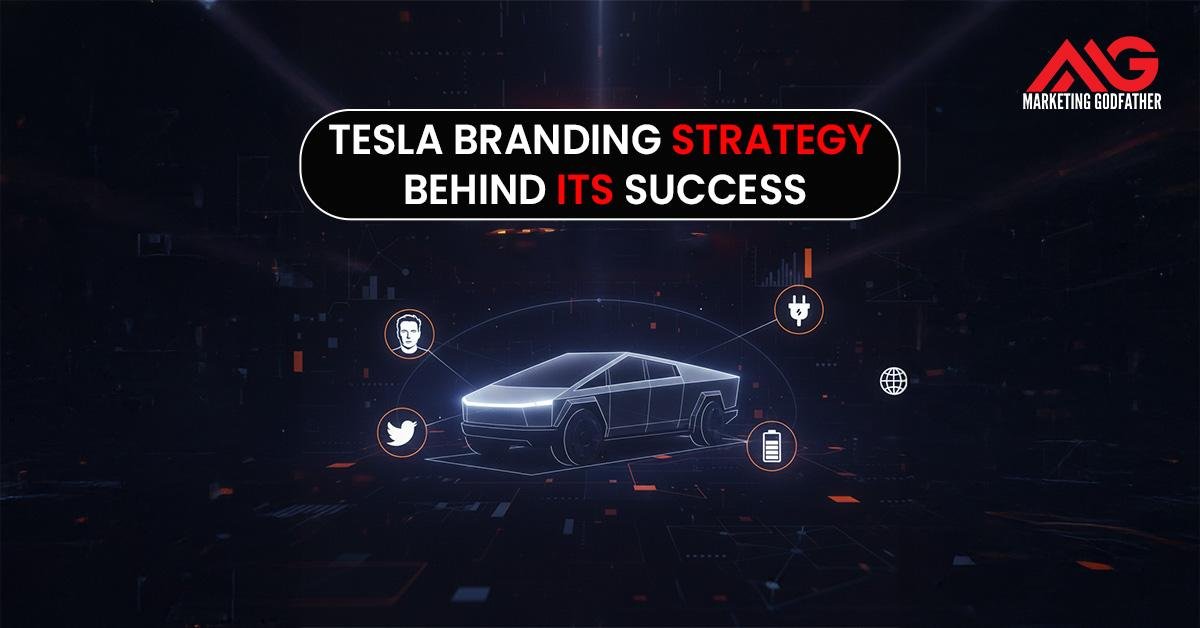Tesla built its identity through vision, experience, and conversation. It didn’t sell cars, it sold the future. Every element of the Tesla brand, from its sleek minimalist design to its mission of accelerating the world’s transition to sustainable energy, reinforces this message. The Tesla branding strategy is more than marketing; it’s a blueprint for how emotion, innovation, and purpose can transform a product into a cultural icon.
The Shift from Automobiles to Innovation Icons
This shift made Tesla more than just a car brand; it became an innovation icon. People don’t just buy Teslas because they want an electric vehicle, they buy them because they want to be part of a story where the world moves forward. The company made electric cool, intelligent, and aspirational something no automaker had achieved at scale before.
Tesla’s Global Brand Appeal and Emotional Connection
Tesla’s power lies in its ability to connect logic with emotion. On one hand, it sells cutting-edge technology zero-emission cars, self-driving software, and energy solutions. On the other, it builds an emotional narrative around hope, innovation, and belonging. People don’t just admire Tesla’s products; they identify with its mission to make the world sustainable.
The Core Pillars of Tesla’s Branding Strategy
Tesla’s rise to global dominance didn’t come from flashy ad campaigns, it came from a strategic foundation built on vision, innovation, and authenticity. Every branding decision, from product design to social media tone, reinforces its core philosophy: “The future is electric, and Tesla is leading it.”
1. Visionary Leadership and Brand Personality of Elon Musk
Elon Musk is not just Tesla’s CEO; he’s its living brand identity. His visionary ideas, candid communication style, and willingness to challenge conventions make Tesla’s story deeply human. Musk’s persona adds boldness, curiosity, and unpredictability qualities that captivate global audiences.
2. Innovation as the Heart of Tesla’s Identity
Innovation isn’t a department at Tesla, it’s the brand’s DNA. From long-range batteries to self-driving algorithms, Tesla built a culture that thrives on solving problems others consider impossible. Each product reflects progress, and each update reaffirms its leadership in technology.
3. Sustainability and the “Future-Driven” Brand Image
Tesla doesn’t just talk about sustainability, it builds an entire ecosystem around it. The company’s mission, “to accelerate the world’s transition to sustainable energy,” resonates with consumers who want purpose behind their purchases. By integrating solar energy products and battery solutions.
4. Premium Positioning Through Minimalism and Design
Tesla’s design language is simple, sleek, and futuristic perfectly mirroring its values. From the clean T-logo to the minimalist car interiors, everything feels deliberate. This Apple-like design philosophy elevates Tesla from being just another EV manufacturer to a premium lifestyle choice. The lack of clutter, both visually and communicatively, strengthens Tesla’s modern and tech-forward brand perception.
Tesla’s Marketing Approach
Tesla turned traditional marketing on its head by proving that a brand can dominate global attention without spending a single dollar on paid advertising. Instead of billboard campaigns and TV commercials, Tesla relied on authenticity, product excellence, and the magnetic pull of its community.
1. Zero Paid Advertising Yet Global Awareness
Unlike other automakers that spend billions on ad budgets, Tesla focuses entirely on product-led marketing. Every car launch, software update, or tweet from Elon Musk becomes a global headline. The brand’s belief is simple: a great product markets itself. This authenticity makes Tesla stand out in an age where consumers value transparency over advertising noise.
2. Word-of-Mouth, Social Media, and Community Hype
Tesla’s biggest marketing engine is its fans. Owners proudly share reviews, delivery experiences, and viral videos of new features online. Social media platforms like X (formerly Twitter), YouTube, and Reddit amplify these voices, creating organic buzz that no ad budget could buy. This grassroots marketing model turns customers into loyal advocates who influence others through trust and excitement.
3. The Role of Product Launches and Events in Branding
Tesla’s product launches are not car reveals, they’re cultural events. Every unveiling, from the Cybertruck to the Roadster, feels like a movie premiere. The company builds suspense through minimal pre-launch marketing and dramatic live demos that showcase innovation, risk, and spectacle. These events spark global conversation, making Tesla trend on every social platform within hours.
Tesla’s Customer Experience and Brand Loyalty
Tesla’s brand loyalty isn’t built on catchy slogans or discount deals, it’s built on experience. From purchase to ownership, every interaction feels futuristic, personal, and transparent. Tesla’s customer journey is intentionally designed to reflect its vision: simple, digital, and direct. Tesla doesn’t see customers as buyers; it sees them as partners in progress people who share the same belief in innovation and sustainability. This mindset turns transactions into relationships and relationships into advocacy.
1. Direct-to-Consumer Model and Personalized Experience
Unlike traditional automakers that rely on dealerships, Tesla sells directly to customers through its website and showrooms. This direct-to-consumer (D2C) model gives Tesla full control over pricing, communication, and experience. Buyers can order a car online in minutes just like shopping for a smartphone. This seamless digital experience reinforces Tesla’s modern, tech-centric brand identity.
2. Building Trust Through Transparency and Tech Updates
Tesla is known for its real-time transparency. Every car receives over-the-air (OTA) updates, improving features, safety, and performance long after purchase. Instead of making customers wait for the next model, Tesla keeps evolving the one they already own. This approach builds lasting trust and loyalty showing that the brand’s relationship doesn’t end at delivery; it begins there.
3. Turning Customers into Evangelists
Tesla owners don’t just drive their cars, they promote them. The company nurtures a passionate community that actively shares feedback, ideas, and experiences online. Every delivery video, autopilot test, or charging-station selfie becomes free global advertising. This emotional connection transforms customers into vocal advocates who defend, promote, and celebrate the brand something money simply can’t buy.
Storytelling and Emotional Branding in Tesla’s Success
Tesla’s branding isn’t powered by ads, it’s powered by emotion and storytelling. Every product, tweet, and public event is part of a larger narrative: the story of humanity’s shift to a cleaner, smarter future. Instead of just selling electric cars, Tesla sells the idea of progress, and that’s what makes its brand unforgettable.
1. Selling a Vision: Not Just a Vehicle
Tesla’s storytelling revolves around a mission, not a model. Each car symbolizes a step toward sustainability, innovation, and self-reliance. By framing its vehicles as part of a global movement rather than a product category, Tesla captures hearts, not just wallets. Owning a Tesla feels like joining a cause, a chance to drive the future instead of watching it happen.
2. The Psychology of Aspiration and Belonging
Tesla’s emotional appeal taps into aspiration and identity. Buyers aren’t just purchasing luxury, they’re buying purpose. They see themselves as early adopters, visionaries, and change-makers. The sleek design, silent power, and advanced tech create a sense of exclusivity and pride, turning every Tesla driver into an ambassador for innovation.
3. Tesla’s Symbolism in the Future of Mobility
Every element of Tesla’s brand, the minimalist logo, futuristic charging stations, and quiet electric hum reinforces one idea: the future is already here. Tesla doesn’t just represent sustainable transport; it represents a shift in how humanity interacts with technology. That symbolism keeps the brand emotionally relevant, even to those who may never own a Tesla.
Comparing Tesla’s Brand Strategy with Traditional Automakers
Tesla’s rise in the automotive industry represents a seismic shift in how brands connect with modern consumers. Unlike traditional automakers such as BMW, Mercedes, or Toyota, which rely on legacy branding, advertising, and dealership networks, Tesla’s strategy is rooted in innovation, digital simplicity, and emotional storytelling.
1. Tesla vs BMW, Mercedes, and Toyota: A Branding Revolution
Tesla’s marketing and brand identity are built on purpose and progress. It connects with audiences through authenticity, innovation, and community-driven excitement.
- BMW continues to focus on performance (“The Ultimate Driving Machine”) and design excellence.
- Mercedes-Benz positions itself around elegance, luxury, and prestige.
- Toyota appeals to mass trust, dependability, and value.
2. Lessons Legacy Brands Can Learn from Tesla
Traditional automakers can draw valuable lessons from Tesla’s unconventional branding approach:
- Build Emotion, Not Just Awareness: Consumers don’t just buy cars they buy beliefs. Tesla’s narrative of sustainability and progress creates emotional ownership.
- Engage Directly with Consumers: Tesla eliminates middlemen and speaks directly to customers, building transparency and loyalty.
- Turn Technology into a Brand Language: Over-the-air updates, smart features, and AI aren’t just functions they’re part of Tesla’s identity.
- Humanize Leadership: Elon Musk’s public persona adds relatability, something many legacy brands lack.
- Make Your Mission the Message: Tesla’s “accelerating the world’s transition to sustainable energy” gives purpose to every action and product.
Challenges and Criticisms of Tesla’s Branding Strategy
While Tesla’s branding is admired worldwide, it’s not without flaws. The same bold, unconventional strategy that made it a global phenomenon also exposes it to unique risks. Tesla’s dependence on personality-driven marketing, high expectations, and its unconventional communication style sometimes create turbulence for the brand’s image. Despite its groundbreaking success, Tesla must constantly balance innovation with consistency, ensuring that disruption doesn’t turn into instability.
1. Overdependence on Elon Musk’s Persona
Elon Musk is both Tesla’s greatest asset and potential vulnerability. His visionary leadership fuels global excitement, but his outspoken nature on social media can sometimes overshadow the brand itself. Public controversies, unpredictable tweets, or polarizing opinions occasionally lead to stock fluctuations and brand reputation challenges.
2. Brand Risks in Public Perception and Controversy
Tesla’s disruptive approach to marketing no ads, bold claims, and ambitious promises creates equally strong reactions. While fans see innovation, critics often highlight overpromising and underdelivering, particularly with features like “Full Self-Driving.” Additionally, negative press around quality issues or delayed product rollouts can impact consumer confidence.
Conclusion: The Future of Tesla’s Brand Evolution
Tesla’s journey is far from over, it’s only evolving. What began as a bold dream to make electric cars desirable has become a global revolution in technology, sustainability, and brand innovation. Tesla didn’t just disrupt the auto industry; it rewrote the rules of modern branding by proving that vision and authenticity can outperform traditional advertising.

